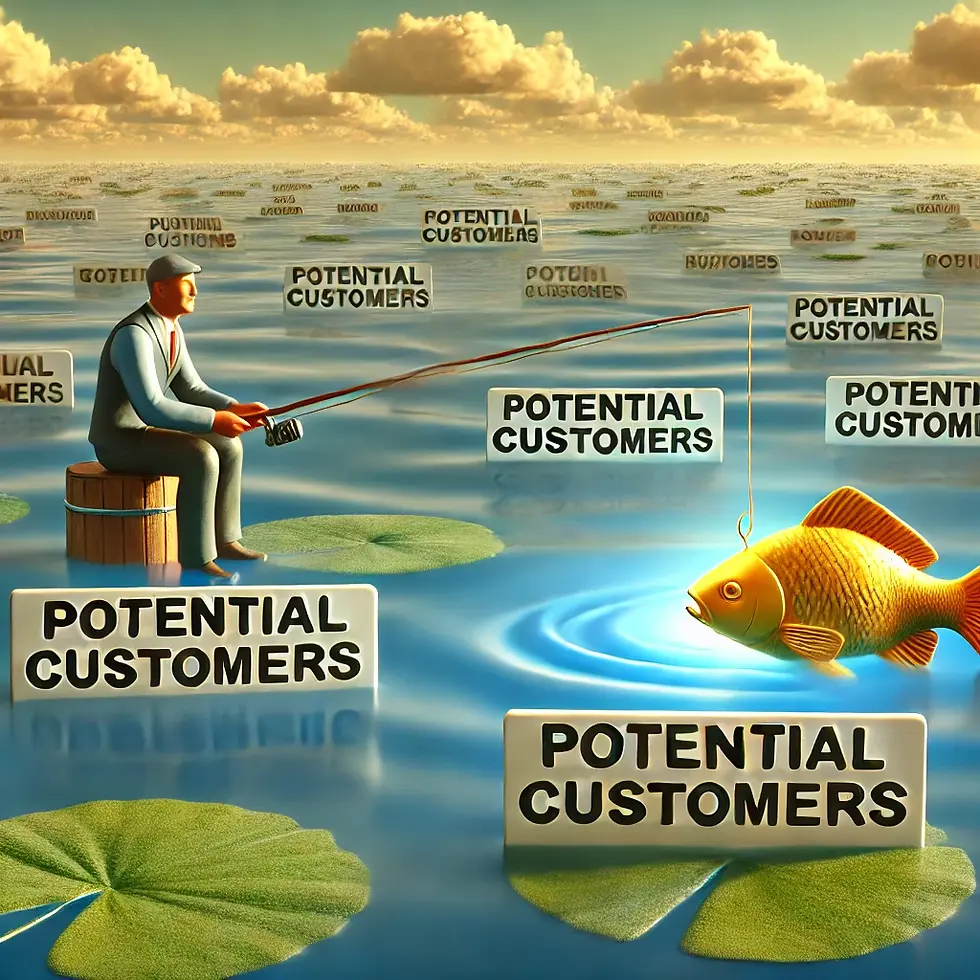Why Most Businesses Get Their Targeting Wrong (And How to Fix It Like the Top 1%)
- saurav soni
- Feb 18
- 4 min read

Most businesses don’t fail because their marketing is bad. They fail because they don’t truly understand who they’re selling to.
You can have the best product, the best branding, the best ads—But if you’re selling to the wrong people, nothing moves the needle.
And here’s the real kicker—most brands THINK they know their audience. They assume they’ve “niched down.” They believe their buyer persona is “clear.”
But assumptions don’t drive revenue. Deep, obsessive customer insight does.
This is where most SaaS and luxury brands silently lose money. And this is what I fix.
Let’s go deep.
The Illusion of Knowing Your Customer
A brand defines their audience like this:
🚫 “We sell to fast-growing startups that need automation.”🚫 “Our target market is high-net-worth individuals who appreciate quality.”🚫 “We help enterprises scale with AI-driven solutions.”
Sounds specific, right? It’s not.
It’s surface-level. It’s generic. And it’s why their marketing doesn’t convert at the level it should.
Here’s what real targeting looks like.
Example 1: The SaaS Brand That Misfired
A B2B SaaS company selling AI-driven sales automation software struggling with conversions.
They had:
✅ A great product
✅ A solid marketing budget
✅ A defined target audience (or so they thought)
But no matter what they tried, their paid ads were failing. Demos were happening, but close rates were abysmal.
Why?
Because their audience was wrong.
They were targeting:❌ Founders of early-stage startups who “need automation”
The assumption? Founders want efficiency, automation, and AI-driven workflows.
The reality? Founders don’t care about automation when they’re still figuring out their sales process manually.
They were wasting money speaking to a group that wasn’t ready to buy.
After deep customer research, we repositioned their ICP (ideal customer profile) to:
✅ VPs of Sales at mid-stage SaaS startups (Series B & above) who had growing sales teams but suffered from pipeline inefficiencies.
Why did this work?
Pain Awareness: These VPs already knew they had a pipeline problem.
Budget & Authority: Unlike founders, they had the power to approve purchases instantly.
Buying Urgency: They were measured on revenue goals—so efficiency wasn’t a “nice-to-have,” it was critical to their KPIs.
The result?
💰 Lead quality skyrocketed.
💰 Close rates doubled.
💰 CAC (Customer Acquisition Cost) dropped by 42%.
Same product.
Different targeting.
Massively different outcome.
This is why surface-level audience research costs businesses millions in wasted marketing spend.

Example 2: The Luxury Brand That Almost Failed Before It Launched
A luxury skincare brand launching in Dubai came to me with an urgent problem.
They had:✅ A product sourced from rare Ayurvedic ingredients✅ A high-end brand identity✅ A $200+ price tag per unit
But here’s what they got wrong:
🚫 They assumed their target market was “women aged 30-50 who care about skincare.”🚫 They focused their messaging on organic ingredients and self-care.
And guess what? The campaign flopped.
Why?

Because luxury buyers don’t buy skincare for the ingredients. **Everyone out there is saying the same thing**
We ran qualitative research—actual interviews with affluent buyers—and uncovered the real emotional drivers:
🔹 They wanted skincare as a status symbol, not just self-care.🔹 They cared about “exclusivity” more than ingredients.🔹 They bought products recommended by luxury spas and elite influencers.
So we shifted the entire positioning from:❌ “Luxury Ayurvedic skincare for modern women.”To:✅ “The Ayurvedic skincare secret of Dubai’s elite—exclusively available at high-end spas & private member clubs.”
Instead of selling the product, we sold the prestige of owning it.Instead of mass marketing, we created scarcity & exclusivity.
Luxury isn’t about need. It’s about status, exclusivity, and emotional alignment.
Most luxury brands miss this. I don’t.
How to Find Your REAL Target Customer (Not the One You Assume Exists)

Every successful brand goes through three phases of targeting:
🔵 Level 1: Demographics
Age, gender, income, location.
(The bare minimum. But this won’t make you millions.)
🔵 Level 2: Behavioral & Psychological Segmentation
Buying motivation (Status? Convenience? Fear?)
Purchase triggers (Impulse vs. Research-heavy?)
Hesitations (What stops them from buying?)
🔵 Level 3: Deep Psychographic Targeting (Where Most Brands Fail)
What social groups do they belong to?
What brands do they already trust?
What words do they use to describe their problem?
What do they fear if they make the wrong choice?
If you aren’t operating at Level 3 targeting, you’re leaving massive money on the table.
Why Most Businesses Struggle (And Why I Don’t)
🚫 They assume their audience is broad.🚫 They sell based on logic, not psychology.🚫 They market features instead of identity shifts.
I do the opposite.
I help SaaS brands and luxury businesses find their highest-value customers, position themselves with pinpoint precision, and create marketing that actually converts.
Because when you get targeting and positioning right—marketing becomes effortless.
You don’t need to “convince” anyone. You don’t need to “sell harder.”
Your audience will just see your product and feel like it was made for them.
And when that happens?
💰 Your marketing costs go down.💰 Your conversions go up.💰 Your brand becomes an industry leader.

Want to fix your targeting? Let’s talk.
Comments